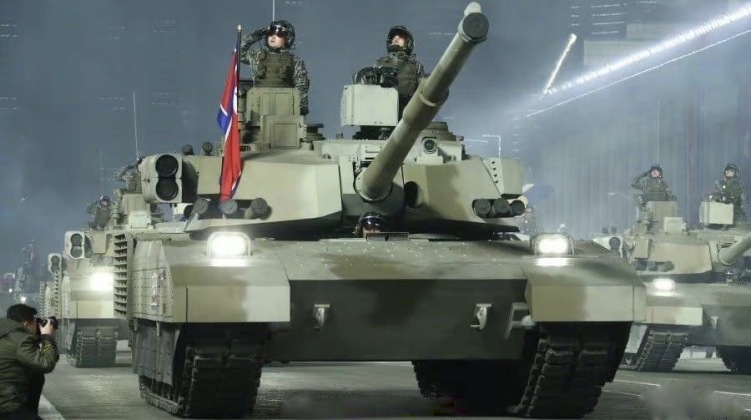News
North Korea Shows Next Generation Tank in Action For First Time: How Much of an Improvement Is It?
North Korean state media has released the first footage of the country’s next generation tank engaging in combat exercises and firing its primary weapon, marking the 70th anniversary of the end of the Korean War which is celebrated in the country as a victory day against an attempted U.S.-led invasion. The new tank was unveiled for the first time in October 2020, at a military parade celebrating 75 years in power for the ruling Korean Workers’ Party, and although it has since appeared at multiple parades in Pyongyang it had yet to be seen in action. The tank was seen at a firing range employing an unknown munition type from its main gun, which is though to be a 125mm gun that was the calibre of the preceding generation of vehicles. The new tank’s designation remains unknown, with some Western analysts simply referring to it as ‘M2020.’ Little is known regarding the new vehicle, but it is expected to be well optimised for operations in mountainous terrain much as previous generations of North Korean vehicles were. New AFPSDS rounds for armour penetration, and major improvements to fire controls and active protection systems, are all expected, including new generations of thermal sights and communications systems.

North Korea has been producing tanks for over four decades, first license producing the Soviet T-62 tank before developing multiple local derivatives of the design. The Pokpung Ho design which entered service in the 2000s provided a second generation of indigenous armour, and benefited from a 125mm main gun, significant improvements to fire controls and integration of composite armour, turret reactive armour and laser warning receivers. The tank was notably unveiled after visits by figures in the North Korean leadership to the Russian Uralvagonzavod tank factory, fuelling speculation that the vehicle could have been influenced by Russia’s latest tank class at the time the T-90A. North Korea’s tank industry had by then developed sufficiently that it was widely offering upgrade packages for older Soviet vehicles abroad, a notable example being the integration of laser rangefinders onto Syrian T-55 tanks which were widely used in the country’s counterinsurgency efforts in the 2010s.
While the Pokpung Ho was considered better optimised for mountain operations than tanks fielded by South Korea and the United States, it was overall widely seen as less capable with its fire controls in particular lagging behind. North Korea is one of just two countries alongside China to have developed two generations of genuinely new post-Cold War tank designs, and with South Korean sources reporting that over 500 Pokpung Hos were acquired it is highly possible that the newer vehicle will also enjoy a significant production run. The extent of production so far remains highly uncertain, as does whether the vehicles seen so far are currently in active service or only in testing.












